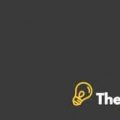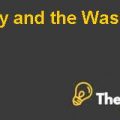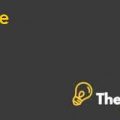Superior Manufacturing Company Case Study Solution
Introduction
The Superior Manufacturing Company, under the leadership of Herbert Waters, faced critical management challenges in 2005. The company's decision to retain or discontinue the production of its three key products (101, 102, and 103) hinged on a complex web of financial data, cost structures, and market dynamics. The case at hand delves into this pivotal period and the decision-making processes. The appointment of Herbert Waters as the general manager in February 2005 marked a turning point for Superior Manufacturing.
Waters was brought in by Paul Harvey, the company's president, in response to management problems stemming from the untimely death of the founder, Richard Harvey. The company's profitability was called into question as the 2004 financial statement revealed a net loss of $688,000, raising concerns about its operational and strategic effectiveness.
Waters initiated an in-depth analysis, assessing not only the financial health of the company but also the product line's profitability and market dynamics. Central to these discussions was the fate of Product 103, which had incurred a substantial loss in 2004. Would the company continue to produce it, or was it time for a strategic shift? As the case unfolds, it becomes evident that Waters had to consider not only past performance but also prospects.
The intricate cost system, as illustrated in Exhibit 2, played a critical role in evaluating the profitability of each product and informing decisions about pricing, production, and cost management. Variance analysis, as presented in Exhibit 4, became a tool for assessing how well Superior was meeting its financial goals and identifying areas for improvement.
Problem Statement
Superior Manufacturing Company confronts a complex dilemma: how to optimize pricing strategies and implement a new cost system while addressing the negative cash flow generated by Product 103 (David F. Hawkins, 2004). In the face of market competition and Samra Company's price reduction, the company must determine the most effective approach to maintain profitability, necessitating a strategic overhaul and proactive decision-making.
Situational Analysis
Sell 100,000 units of any of the 3 Products, which would be Chosen
With the opportunity to choose one among the three products that I could sell 100,000 units of, I would go for Product 101 without a second thought. The reason behind this choice is a well-thought-out assessment of various factors. For one, Product 101 has proven to be the most profitable among the three, raking in a total profit of $1,407,000 in the first half of 2005. This makes it the leading revenue source for the company. Product 101 stands out due to its cost structure which maintains lower variable costs than those of its competitors. This translates to profitability, as a larger percentage of the sales price goes towards covering fixed expenses.
Historical sales data further supports the case for Product 101, as it achieved the highest unit sales among the three products during the specified period. This signifies strong market demand and consumer acceptance, making it a promising choice for maximizing sales volume. Additionally, the cost structure of Product 101 is more adaptable to changes in sales volume, thanks to a higher proportion of variable costs. This adaptability is essential when striving for profitability in various market conditions and sales scenarios. Taking all these factors into consideration, selling 100,000 units of Product 101 emerges as the most judicious decision, likely resulting in the best overall financial performance for the company.
Determined that Labor Usage is Indicative of the Usage of other Factors of Production
If the labor usage is indicative of the usage of other factors of production, and I were to sell 100,000 units of any of the three products, Product 102 would be the preferred choice. This decision is grounded in the assessment that Product 102 is the most cost-efficient option concerning labor, which often serves as a reliable proxy for the consumption of other production inputs.
The labor cost for Product 102 is comparatively lower, making it an economically sound choice. It implies that not only direct labor but also other related production factors like materials, supplies, and repairs are likely to be more efficiently utilized in the production of Product 102. This aligns with the assumption that labor usage can represent the broader pattern of resource consumption............
This is just a sample partial case solution. Please place the order on the website to order your own originally done case solution.













